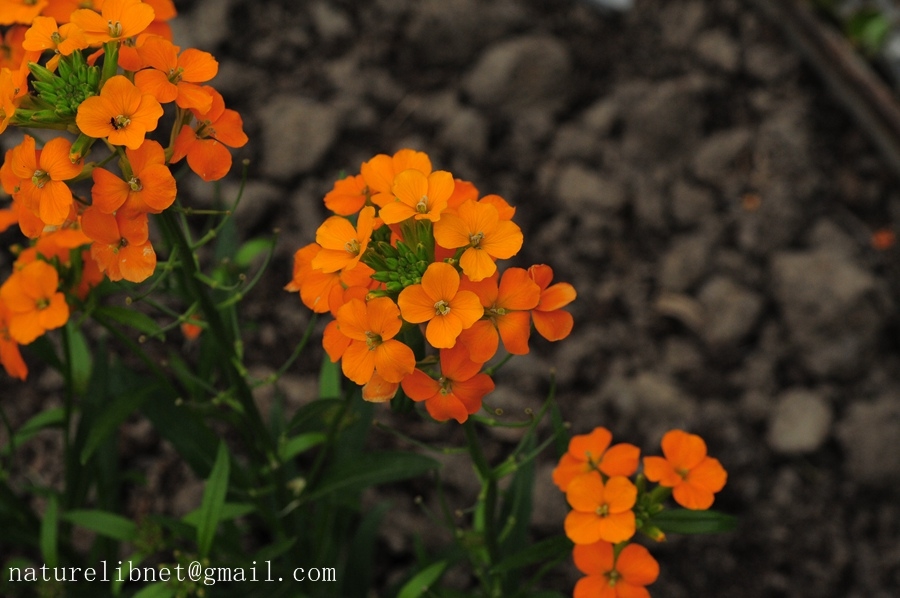- Scientific Name: Erysimum × cheiri (L.) Crantz
- Ref: Cl. Crucif. Emend.:116. 1769
- Synonym: Cheiranthus cheiri Linnaeus, Sp. Pl. 2: 661. 1753
- English Common Name: wallflower
- Chinese Common Name: 桂竹香 guìzhúxiāng
- Family: Brassicaceae
- Genus: Erysimum
- Distribution: Disturbed sites, lawns, abandoned gardens; 0-1500 m; widely cultivated ornamental of European origin.
- Photo: 04/19/2013, Chenshan Botanical Garden, Shanghai
Biennials or subshrubs. Tri-chomes of leaves 2-rayed, rarely mixed with fewer 3-rayed ones apically. Stems erect, unbranched or branched distally, (woody at base when subshrubs), 1.5-8 dm. Basal leaves (rosulate when biennial, often withered by fruiting), similar to cauline. Cauline leaves petiolate; blade (obovate to oblanceolate, 4-22 cm × 3-12 mm, base cuneate to attenuate), margins entire to repand. Racemes considerably elongated in fruit. Fruiting pedicels divaricate-ascending to ascend-ing, slender, narrower than fruit, 7-13 mm. Flowers: sepals oblong, 6-10 mm, lateral pair not or slightly saccate basally; petals orange, yellow, brown, red, purple, violet, or white, broadly obovate to suborbicular, 20-35 × 5-10 mm, claw 7-12 mm, apex rounded; median filaments 7-9 mm; anthers linear, 2.5-3.5 mm. Fruits ascending, narrowly linear, straight, not torulose, 3-10 cm × 2-7 mm, latiseptate to terete, not striped; valves with prominent midvein, pubescent outside, trichomes 2-rayed, glabrous inside; ovules 32-44 per ovary; style cylindrical or subconical, slender, 0.5-4 mm, pubescent; stigma strongly 2-lobed, lobes much longer than wide. Seeds ovate, 2-4 × 1.5-3 mm; wing continuous or distal. 2n = 12. (FNA Vol.7 p.535,539)
